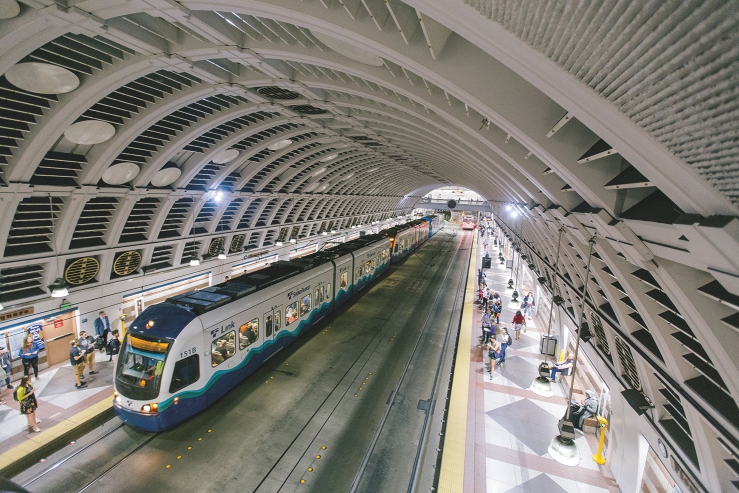Carbon Savings in Seattle
Authors: Gerald Verbeek, Allnamics, with contributions from Andrew Verity, Terracon, and Kimberly Martin, Ph.D., P.E., Keller North America

The Challenges
When it comes to sustainability, many find it difficult to relate to derived emission reductions when alternatives are presented. So, the first challenge is simple: how can you present some very basic numbers to make it possible to put emission reductions in perspective? The second challenge is, what can DFI do other than just talking about more sustainable foundation design?
The Solution
The DFI 48th Annual Conference this year is at the Seattle Convention Center, which is some 14 mi (22 km) from the airport. Assuming 1,000 attendees all take a rideshare using a gas engine between the airport and the convention center, it would require 28,000 car mi (45,000 km), which equates to roughly 28,000 lb (12,700 kg) of emissions (on average, one mile of a travel by a nonelectric car generates one pound of CO2 emissions). That is an easy to remember number, and the answer to the first challenge.
But there is an alternative in Seattle, where the light rail system connects the airport with the city’s downtown. For some time now, this system has run on 100% carbon-free electricity as it uses exclusively wind energy — the first major light rail system in the country to go completely green. If 1,000 attendees of the annual conference take advantage of this light rail connection between the airport and the convention center, instead of riding in gas engine rideshare vehicles, we can quantify the savings at 28,000 lb (12,700 kg) of CO2 emissions and address the second challenge.
The Results
While 28,000 lb (12,700 kg) of CO2 emissions may sound like a lot, it is the same carbon savings as about 40 cu yd (30 m3) of concrete, as one cubic yard of concrete generates some 700 lb (317 kg) of CO2 emissions, another easy to remember number. When you compare that with the approximately 400 million cu yd (300 million m3) of concrete used in the U.S. last year, it becomes obvious that saving, say, even just 1% of that volume by more efficient design is much more meaningful. That 1% volume reduction would account for 2,800 million lb (1,270 million kg) of CO2 emissions.
Or we could compare the light rail emissions reductions to those associated with rebar steel, where every pound (since this kind of steel is usually 95% recycled) produces roughly 0.7 lb (0.3 kg) of CO2 emissions. So, the 28,000 lb (12,700 kg) of emissions savings from using the light rail would be roughly the equivalent of saving some 29,500 lb (13,400 kg) of steel. When you compare that with an estimated 20 billion lb (9 billion kg) of rebar used in the U.S. last year, it is once again clear that saving just 1% of steel rebar weight is much more efficient.
While opting to use the light rail to attend the annual conference may not generate the same results as a minor optimization of a foundation, it still makes a difference. Hopefully many of you will make your way through the parking garage at the Seattle airport to the light rail station for this year’s conference.

